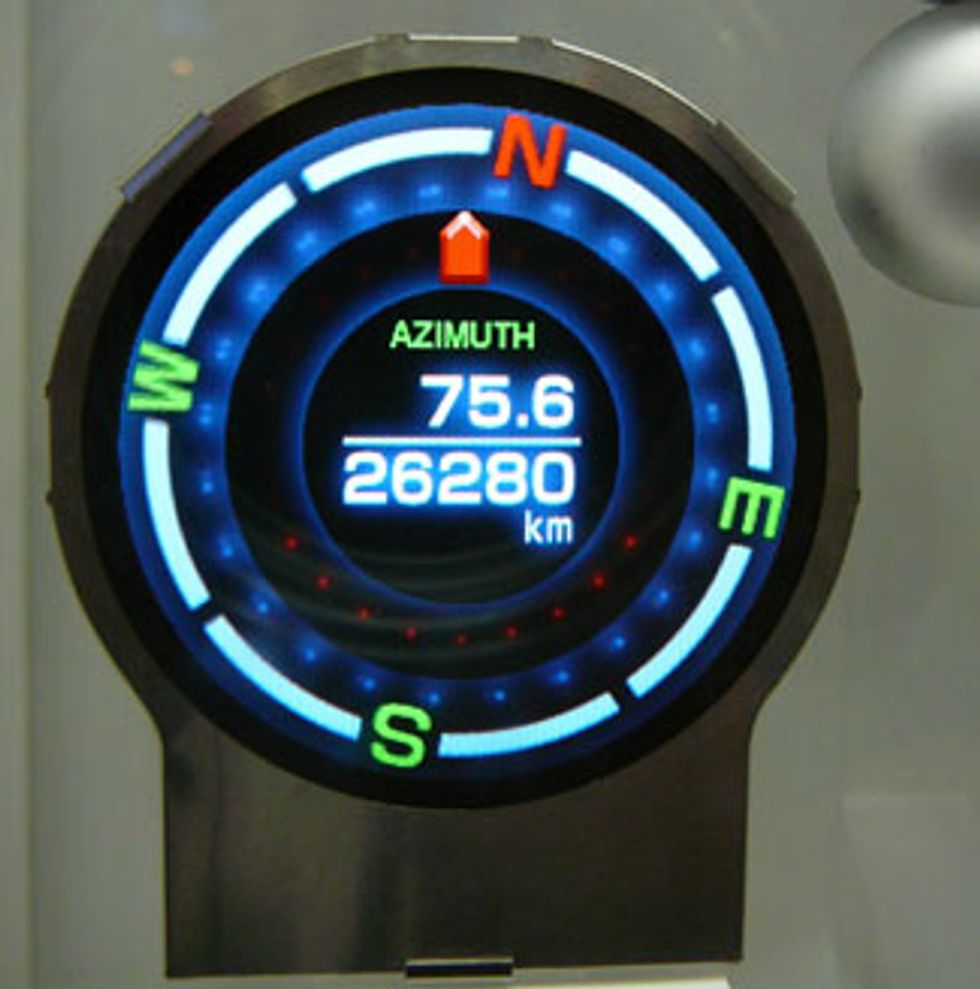31 October 2007—As in previous years, a slew of new flat-panel displays of all sizes was shown off at FPD International 2007, held in Yokohama, Japan, 24 to 26 October. But with the unveiling of a circular LCD prototype from Toshiba Matsushita Display Technology Co., it won’t be long before we start seeing all manner of new display shapes added to the mix. TMD unveiled a round screen for automobile dashboards, and a company official says the new LCD technology it uses can also make displays of many other shapes. TMD is considering several applications outside the auto industry, such as front displays for mobile phones, he says. ”We can even make heart-shaped displays now. So applications for entertainment are possible.”
The idea for the circular screen came from the auto industry’s instrument makers, who requested circular displays for speedometers and tachometers. A circular display would save precious space in a vehicle’s crowded dashboard, which also has to have room for car-navigation displays and other recent additions.
The LCD’s shape has traditionally been limited to a rectangle or a square. That’s largely because of the huge number of connections, aligned along the side and bottom of the screen, needed to drive the pixels. Two different technologies are available for LCD manufacturing: amorphous silicon, used in displays for mobile phones and notebook PCs, and polysilicon. Amorphous silicon�based LCDs have relatively slow-switching transistors. By comparison, polysilicon LCDs, fabricated using a low-temperature method, have transistors that switch so fast that they can be used to make up the driver circuitry to which the pixels are connected. So those circuits can be integrated right onto the glass substrate instead of residing on a separate circuit board. The integration reduces the number of connections at the edge of the display, freeing up enough of the glass to make circles and other shapes possible.
”Actually, the biggest challenge we faced was cutting the glass round,” the TMD official said. He added that the round design inevitably wastes more materials than the standard design. The wasted glass contributes to the higher cost of the prototype—roughly twice that of a similarly sized rectangular LCD. Before TMD ships the commercial product, the official says, they ”must bring the cost down.”
The screen’s effective viewing area is 62 millimeters—a little bigger than the top of a soft drink can. The prototype’s specifications include a resolution of 240 by 240 pixels, a maximum 600:1 contrast ratio, and a screen brightness of 500 candela per square meter. (Today’s average LCD monitor has about the same contrast ratio and around half the brightness.) The entire substrate is round for three-quarters of its circumference, with a diameter of 75 mm, and the bottom portion is flat. The depth, including the backlight unit, is 11 mm. TMD says it will improve on some of these specs by the time it starts shipping displays to the automobile industry in the next two years.
About the Author
John Boyd writes about science and technology in Japan.
